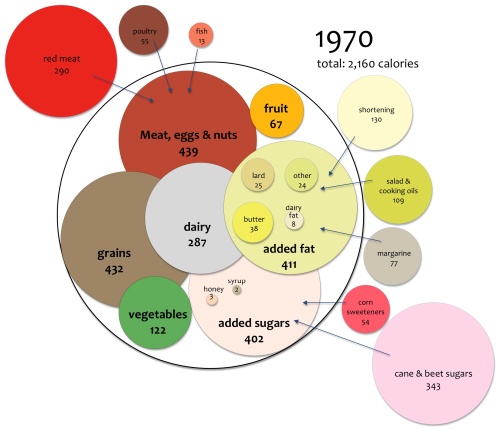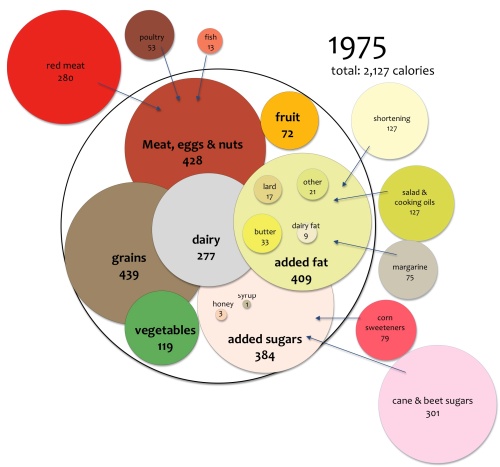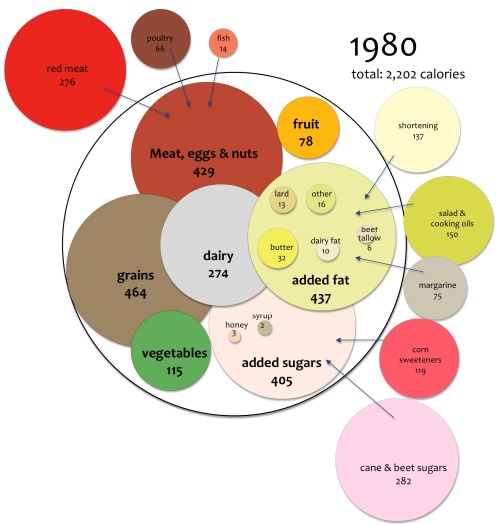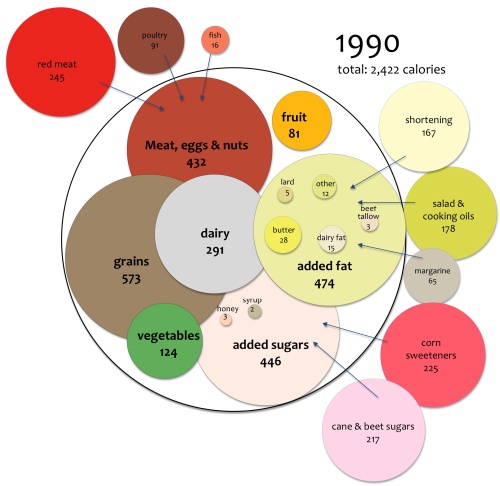
It’s barely April, but I’m getting excited about October. The reason? An event called Food Day, scheduled for October 24th.
It’s being billed as an Earth Day for food, an opportunity to galvanize people from all parts of the food movement and engage new people. The event will include simultaneous activities in cities across the U.S. Organized by local communities, the events will highlight sustainable agriculture, nutrition, access to healthy and delicious food, and strategies to counter the marketing of detrimental junk foods. The focus is broad, ranging from recipe to policy.
That broad focus is part of why I’m excited. Most people working in the food and nutrition movement focus on one––or maybe two––of the core areas: nutrition (healthful or detrimental foods, sustainability, taste/recipes, or access. But, as I’ve often said, these should not be separate categories. Nutritious food is sustainable food, the biggest example of this being that the animals raised on pasture (sustainability) produce not just delicious foods, but fats and vitamins essential to human health. Access to these foods should be a right, not a privilege. When affordable food access is limited, junk food fills a gap.
This event is designed to emphasize that overlap and, ideally, to promote information-sharing between people who specialize in one or two of the aforementioned areas, but not all. It’s also a chance to ask our policymakers for specific changes, to educate and learn from our community, and to share some seriously tasty, local, sustainable eats.
To that end, Seattle: Start thinking about what kinds of events we can do here. The campaign is literally just being launched today, so there is a lot of time to plan. Considering that our mayor is on the event’s advisory council (the only mayor so far, I believe), considering all the people active in various parts of the food movement here, and considering all the delicious, fresh food that’s going to be available in October, I’m pretty sure Seattle can come up with something good.
~
The following is the press release for this event.
WASHINGTON, D.C.—Many of the most prominent voices for change in the food movement and a growing number of health, hunger, and sustainable agriculture groups today announced plans for Food Day—nationwide campaign to change the way Americans eat and think about food. Organized by the Center for Science in the Public Interest, Food Day will bring people together from across the country to participate in activities and events that encourage Americans to “eat real” and support healthy, affordable food grown in a sustainable, humane way.
Food Day will be observed on Monday, October 24, 2011 and will likely include a series of marquee events in Washington, New York City, San Francisco, and other major cities, and thousands of smaller events around the country.
“Food Day is designed to further knowledge, understanding and dialogue about critical topics in food, agriculture and nutrition—spanning the food chain from farm families to family tables,” said Senator Tom Harkin, Chairman of the Senate Health, Education, Labor, and Pensions Committee, and an honorary co-chair of Food Day. “The many activities and events spurred by Food Day will help foster a robust dialogue on how to promote better nutrition and health, lessen hunger and increase access to food, enhance opportunities for farm families and rural communities and conserve natural resources. There are differing ideas and perspectives on these issues and surely we all benefit from discussions about the connections among food, farms, and health.”
Modeled on Earth Day, organizers hope Food Day will inspire Americans to hold thousands of events in schools, college campuses, houses of worship, and even in private homes aimed at fixing America’s food system. A Food Day event could be as small as a parent organizing a vegetable identification contest to a kindergarten class—or as massive as a rally in a city park, with entertainment and healthy food. Health departments, city councils, and other policymakers could use Food Day to launch campaigns, hold hearings, or otherwise address communities’ food problems.
The campaign hopes to agitate for progress on five central goals:
- Reducing diet-related disease by promoting healthy foods
- Supporting sustainable farms & stopping subsidizing agribusiness
- Expanding access to food and alleviating hunger
- Reforming factory farms to protect animals and the environment, and
- Curbing junk-food marketing to kids
“In planning for Food Day, we’ve begun to bring together a lot of people with common interests in food issues, but who otherwise haven’t worked all that closely together,” said Michael F. Jacobson, who founded CSPI 40 years ago. “So whether your primary concern is human health, farm policy, or the quality of life in rural America, Food Day can be an opportunity to organize people together to solve local and national problems.”
Besides Jacobson, Food Day is led by honorary co-chairs Senator Tom Harkin (D-IA) and Rep. Rosa DeLauro (D-CT), and an advisory board that includes author Michael Pollan; prominent physicians including Caldwell Esselstyn, Michael Roizen, and David Satcher; nutrition authorities Walter Willett, Kelly Brownell, and Marion Nestle; public health expert Georges Benjamin; and chefs Nora Pouillon, Dan Barber, and Alice Waters.
National organizations such as the American Dietetic Association, the American Public Health Association, the Community Food Security Coalition, Earth Day Network, the Farmers Market Coalition, the Humane Society, the National Sustainable Agriculture Association, the Prevention Institute, Slow Food USA, and many city- and state-level organizations are planning on organizing or participating in Food Day events.
“Food Day is an opportunity to celebrate real food and the movement rising to reform the American food system,” Pollan said.
Eventually, FoodDay.org will let people type in their zip codes to find Food Day events near them—or to invite people to Food Day events of their own making.
Read Full Post »










